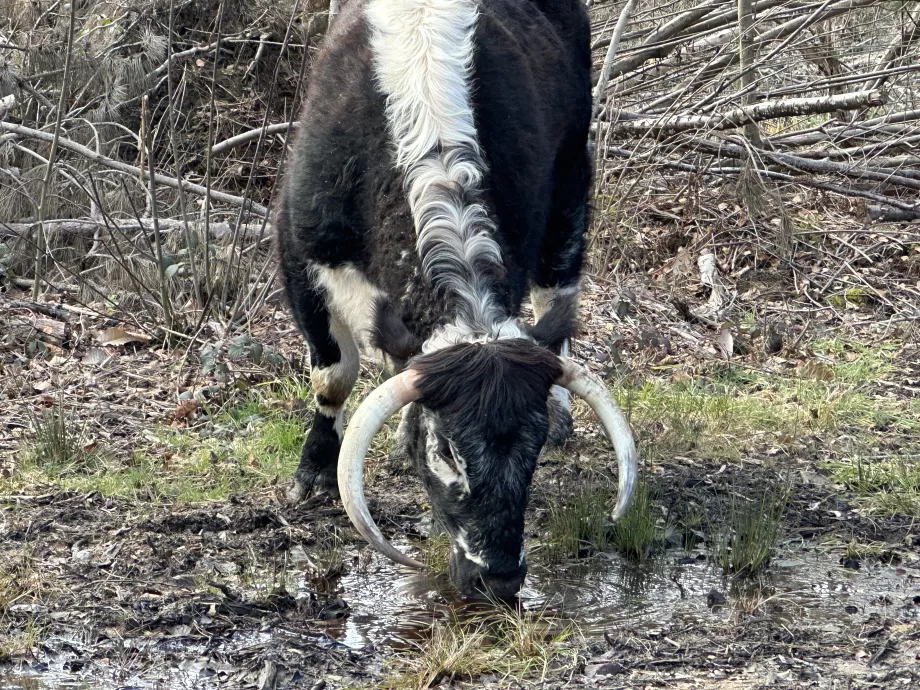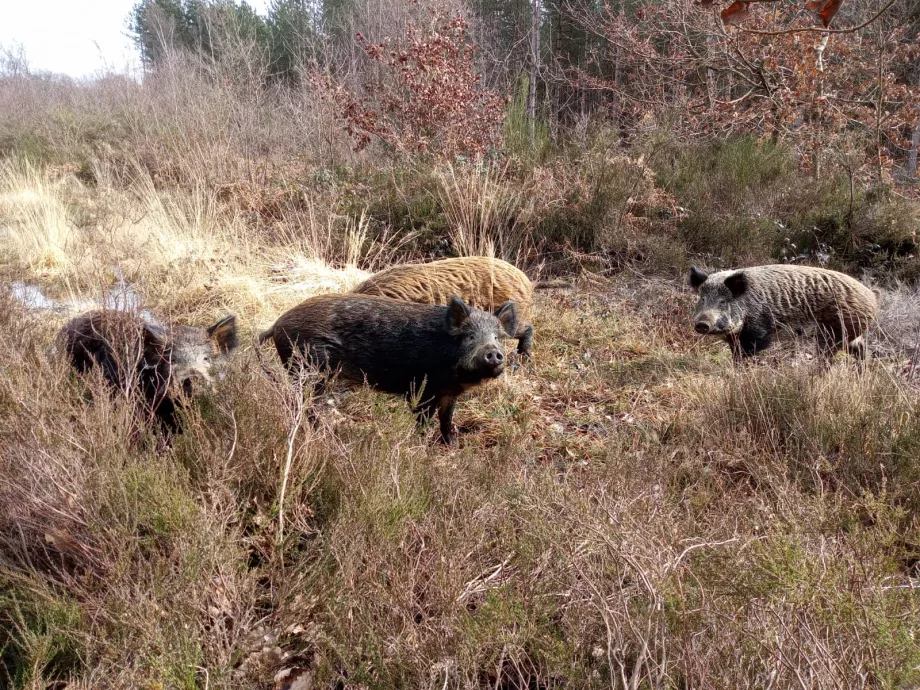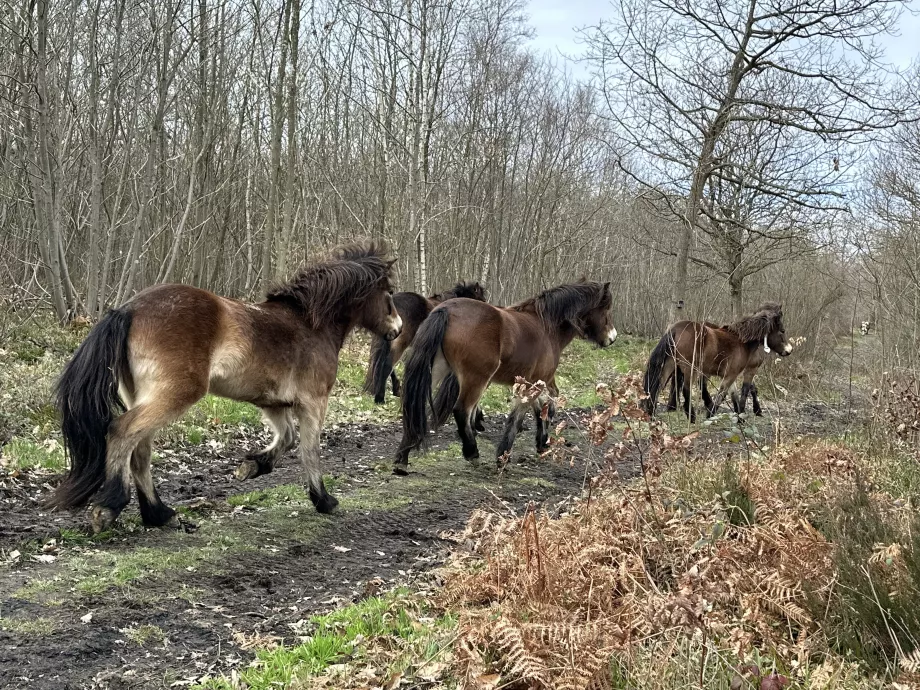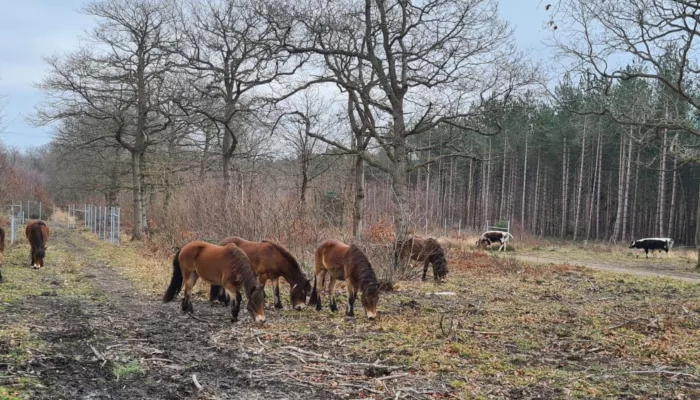
Longhorn cow
Since then, the team have been working on finalising work to bring the lesser mentioned puzzle pieces of the project to Blean Woods – the conservation grazers. The Exmoor ponies, Iron-Age pigs and Longhorn cattle have been patiently waiting on other reserves for the opportunity to bring their unique behaviours to the woodland. The animals have been chosen due to their abilities to shape the landscape around them, and the impact of the Longhorns will be compared to that of the bison.
Area Manager and lead on Wilder Grazing Alison Ruyter said: “Wilder grazing is about using native wild breeds of livestock to mimic the things that mega-herbivores would have done in the past when wild horses, Aurochs and bison roamed around the country. They were inextricably linked with their habitats and we want to mimic that using the animals available to us now.”
The Longhorns have been chosen for their ability to graze woody twigs trees and scrub, opening up the canopy. The ponies target soft heavy vegetation creating space for different species in grassy and scrubby areas whereas the pigs will compliment this by rootling around with their snouts, looking for roots and bulbs, disturbing the soil and causing seeds to grow, even if they have been dormant for some time.

Iron-Age Pigs at West Blean and Thornden Woods
Director of Zoological Operation for Wildwood Trust, Mark Habben said: “We had to jump over a huge number of hurdles to source the bison and get them over here. Now they’re settled and in their herd, it’s great to see them being joined by all the other species roaming through the forest doing their important work.
“It’s a really exciting stage for this innovative project. There’ll be lots of research and observations in the coming years and we’ll be looking at how their behaviours compare and the impact they have on the environment.
“After the challenges of getting this project off the ground, we’re now at the point - along with the local community and all our supporters - of really enjoying what is here and taking pleasure in what’s going on around us.”
The addition of the conservation grazers will be tracked through a comprehensive ecological monitoring programme, which will monitor multiple layers of habitat and detect the change wherever it occurs. Everything from soil sampling and insect counts to collecting data on vegetation structure is encompassed within the programme.
Three ponies and four Long-horn cattle will be free roaming in one part of the woodland, whereas the bison and three ponies will be within a second area. The four Iron-age pigs will roam between the two areas giving them full access to the woodland. In a third area of the forest, traditional woodland management will continue, with coppicing and ride management.
The monitoring programme will compare the impacts that each method of woodland management has on the area and will document the impact that such techniques have on biodiversity and bio-abundance. Whilst the outcomes are expected to be very positive this will show scientifically just how successful nature-based solutions, like the introduction of bison, are as a management tool.

Exmoor ponies
Kent Wildlife Trusts, Ecological Evidence and Academic Partnerships Lead, Kora Kunzmann said: “The most exciting part of what must be one of the UK’s largest ecological monitoring programmes is that it’s an experimental approach.
“Not only will we be able to evidence what changes over time and how it changes, but we will also be able to compare the impact of the bison’s unique behaviour and ecology to that of a similarly large herbivore and to an area that has no grazing impact whatsoever.”
Laura Chow, Head of Charities at People’s Postcode Lottery, said: “Introducing these conservation grazers is another win for us all, and we are delighted that funding raised by players of People’s Postcode Lottery is enabling this literally ground-breaking work.”
With the animals now in place the next phase of the project revolves around ensuring that the bison herd can roam a larger area of the woodland. Currently the herd has 50 hectares of space, however it is hoped they will be able to graze a larger 200-hectare area.
A planning application has been submitted to Canterbury City Council and, pending approval of the plans, work would begin on the creation of bison tunnels. The tunnels will allow the bison to move around the woodland freely and would also offer a vantage point for people to spot them.
Those wishing to support the Wilder Blean Project can donate through our Just Giving page.

